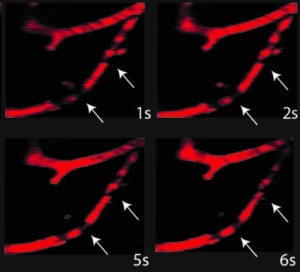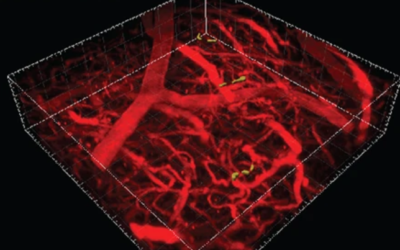
Welcome
The focus of our research is to elucidate common mechanisms of vascular dysfunction and cognitive decline in neurodegenerative disease. The vascular network and brain blood flow are crucial to supply the brain with oxygen and nutrient to exert proper function.
Although it has been known for many years that vascular dysregulation and cerebral blood flow (CBF) reductions are involved in neurodegeneration and stroke, the underlying mechanisms leading to CBF reductions are only beginning to be understood.
What cells of the neurovascular unit mediating the signaling leading to CBF reductions and vascular inflammation?
What are functional connections between the incidence of stroke/microhemorrhages, and Alzheimer’s disease?


To achieve these goals, we will utilize novel second-generation models of neurodegenerative disease combined with high spatial and high temporal in vivo multiphoton imaging, behavioral experiments, and post mortem analyses.